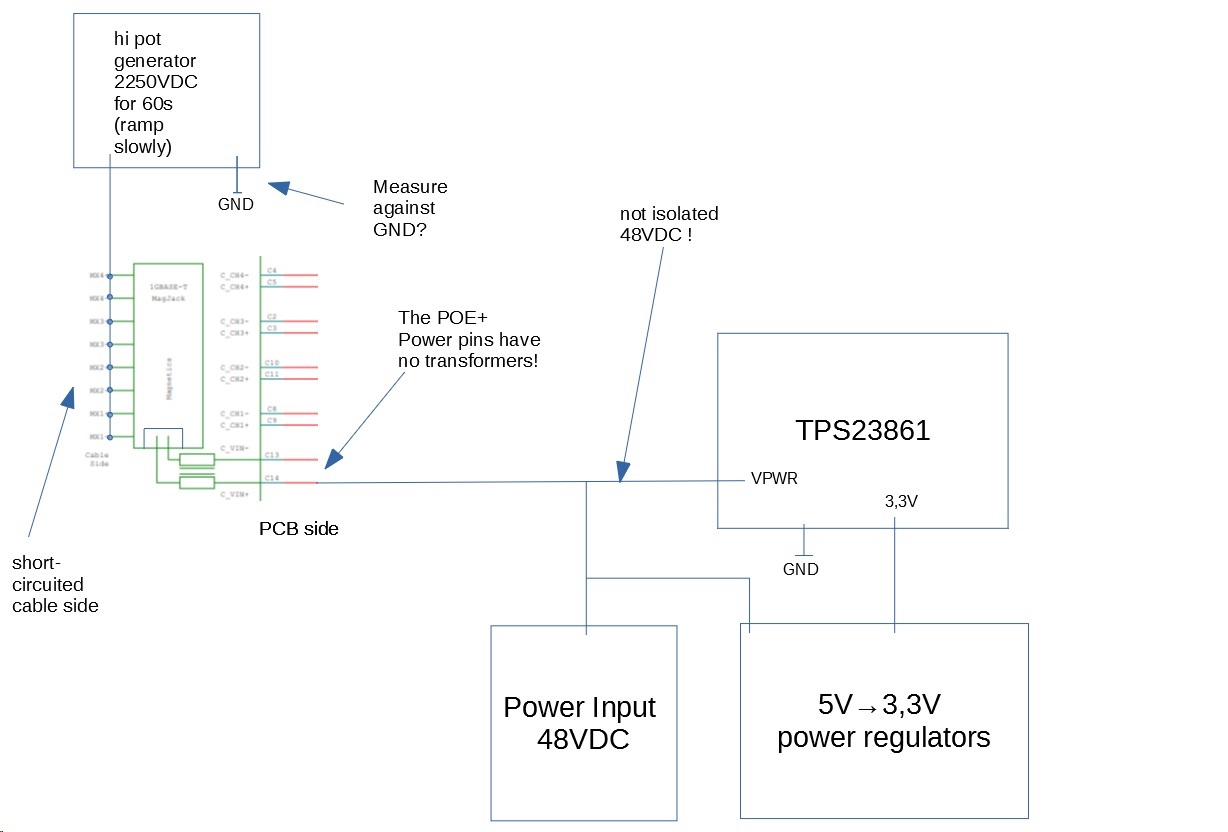Hello experts,
i have developed a POE+ switch with the TPS23861. All functions are ok, but we have made a 2250VDC test (shortened DATA Lines which include the POE PWRD voltage) measured against GND, which doesn't passed successfully.
So i asked me, if the VDD and VPWR (and DGND and AGND) of the TPS23861 are isolated? We use an external AC/DC power supply, which have 48 VDC output. After it, the 3,3VDC (VDD) is generated.
AGND and DGND are connected together.
I am not sure how the 2250VDC test is done correctly (relating on IEEE 802.3). Is the test measured from the Data lines to GND or to Earth? Perhaps you can help me.
I think about an isolation between the 48VDC and the 3,3VDC if it needed for the IEEE802.3 high voltage test.. For this the VPWR and the KSen pins belong to AGND and VDD to the digital DGND.
Thank you for your help.
Marcel


